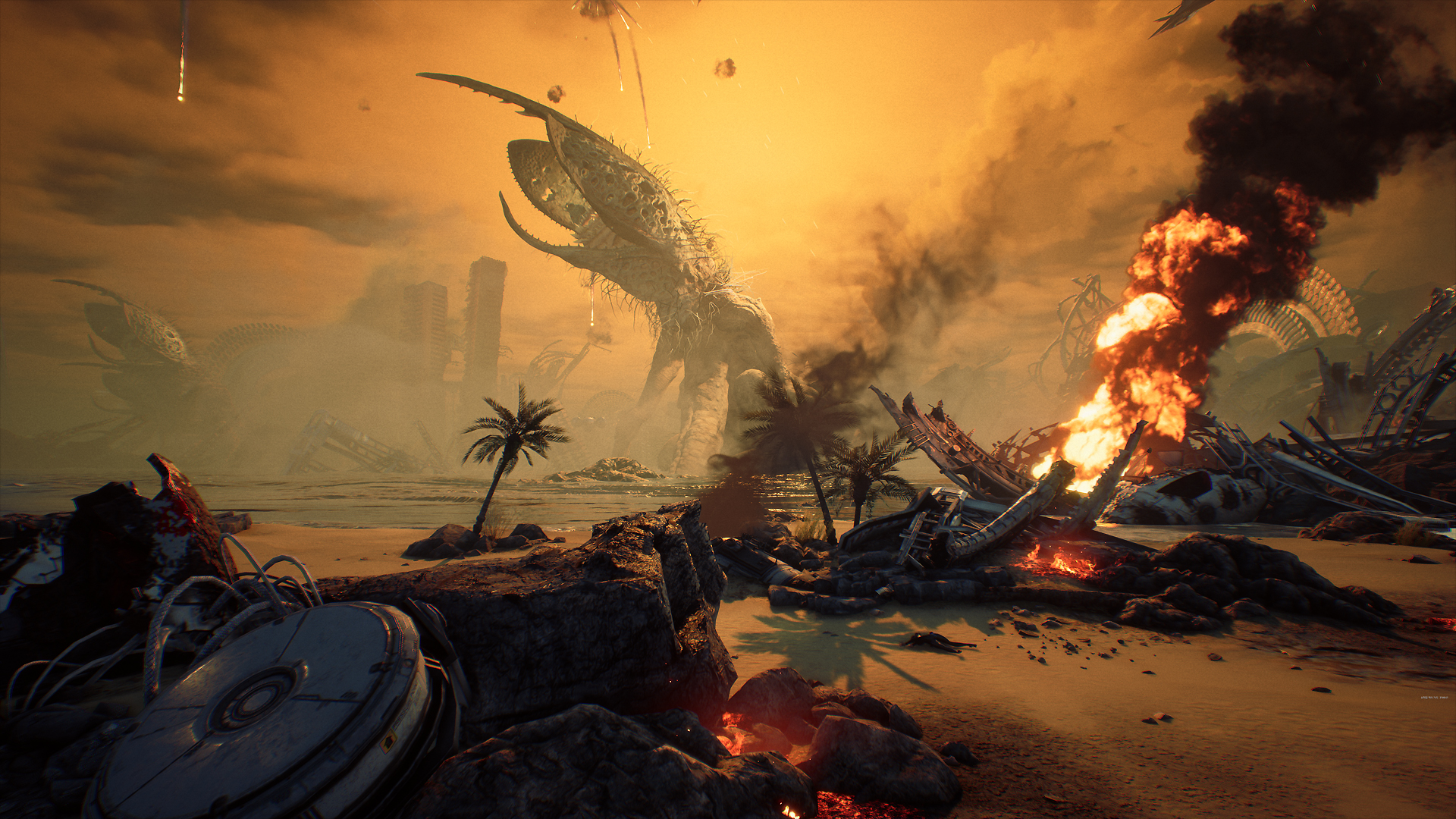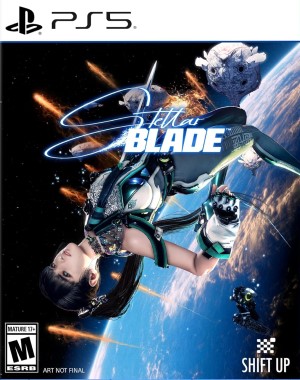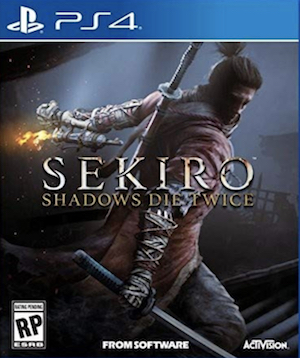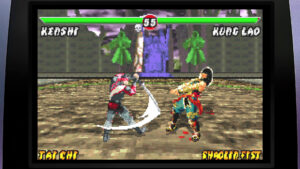
A lot of comparisons have been made between Stellar Blade and numerous other titles; its cinematic action suggests Metal Gear Rising Revengeance, it’s aesthetic very much reminiscent of modern action games, and its one-on-one, parry-heavy combat implies a Souls-like influence. Of FromSoftware’s canon, Sekiro: Shadows Die Twice is the closest touchstone, but analysing the deeply nuanced combat systems in both games reveals more points of distinction than similarities.
Difference: Input responsiveness
Sekiro’s input response is as sharp as a Shinobi’s katana, whereas in Stellar Blade there is a slight but comparatively noticeable lag between button presses and the swing of the sword. It’s only minor, but it means quickfire button mashing combos in Stellar Blade isn’t as effective as taking a steadier, more measured approach to inputs. There’s another difference here too: Sekiro doesn’t really do combos, despite spamming basic attacks to break an opponent’s posture having limited effectiveness against early fodder enemies the game favours basic inputs overall.
Difference: Parry leniency
Both games demand rapid player reaction times, especially when reading enemy attack patterns to block and/or counter. Both test player reactions in their parry systems, but in keeping with Stellar Blade’s minor input lag parrying is much more forgiving than in Sekiro. And even though parrying breaks your opponent’s guard in both games, Sekiro’s posture mechanic feels much deeper and nuanced compared to Stellar Blade’s balance meter, with the latter requiring a set number of parries to stagger an enemy.
Similarity: Retribution is a Deathblow
Break an enemy’s posture in Sekiro and they’ll become exposed to Deathblows, brutal finishers to end the bout (with some enemy’s requiring more than one of, of course). Retribution moves function largely the same way in Stellar Blade, with the player character grinding enemy balance down via a blend of well-timed parries and attacks. Once they’re staggered the player character can unleash a flashy signature finisher of her own. A minor difference here is all kills in Sekiro seem to be the result of a Deathblow whereas the player character can kill opponents without unleashing a Retribution.
Difference: Colour coded attacks
Sekiro’s crimson Kanji symbol indicates a perilous manoeuvre as incoming from an opponent, and it’s down to the player to observe their stance, behaviour, weapon position, and other visual clues before launching a specific counter. Thing is, whether it’s a thrust or sweep attack, the symbol is the same. Stellar Blade opposes this with a broader colour palette, giving players’ greater clue in how to evade and counter specific enemy attacks. It certainly makes unleashing the best defence, evasion, or counterattack much easier when compared to Sekiro.
Difference: Dodge abilities

Dodging has mileage in both games, although you could argue for every dodge in Sekiro you could have jumped for the same effect. Regardless, both games have unlockable dodge abilities, with Stellar Blade’s specialty dodges, Blink, and Repulse, tied to an enemy’s colour coded attacks. Blink will teleport the player character behind her opponent whilst they’re in full swing, and Repulse flips her backward out of harms way. Sekiro has the Mikiri counter which sees Wolf dodge a thrust attack, stamp on the protruding sword, and deal a deathblow.
Similarity: Blocking tactics
Blocking is viable in both games, although it’s not the way either developer encourages you to play. Overuse the block in Sekiro and Wolf’s posture bar will overflow, whilst blocking too much in Stellar Blade will eventually lead to the guard being broken. Both outcomes spell likely doom for the player. Instead, parrying, dodging, and countering are the means in which to overcome opponents. Blocking will only get you so far.
Difference: Stealth
Sekiro is, of course, ostensibly a stealth title. You’re a shadow in the day, a ghost in the night. The verticality afforded by Wolf’s grapple hook expands his capability, giving access to alternative routes along rooftops to pincer congregating enemies and pick them off one by one. Stealth isn’t especially necessary in Stellar Blade; the player character can tackle multiple enemies simultaneously without the same level of challenge Wolf would face with similar numbers in attack.
Difference: Difficulty modes
There’s a lot of chat that Stellar Blade is a Souls-like, but one specific feature negates its Souls-likeliness and demotes it to Souls-lite at best, and that is its difficulty settings that can be chosen at the beginning. Normal mode serves up the most challenge, with the campaign mode giving players a less stressful experience, affording better chance to absorb the narrative. FromSoftware games are infamous for their challenge, and Sekiro: Shadows Die Twice is no different. There’s no way FromSoft would make their games as approachable as Shift Up have made Stellar Blade.
Similarity: No stamina systems
The stamina systems typical of Dark Souls simply wouldn’t work here in either game, from a narrative point of view but more so due to their combat systems. See, perfect parrying is a rewarding system in Stellar Blade and Sekiro. If both player-characters were getting worn out during parries, then it’d become demoralising; it’d disturb the unique rhythmic action both games aim to foster.
Difference: Combo tactics
Stellar Blade encourages combos in a way that Sekiro simply does not. The Incursion or Onslaught combos wave her blade around in hypnotic ways and they’re a satisfying thrill to pull off. They work well at disengaging an opponent’s balance too, and whilst the aforementioned combos in Sekiro can be effective against less powerful enemies, the satisfaction in FromSoftware’s shinobi opus comes from perfect parrying to break guards and deal brutal Deathblows. As the game progresses, Stellar Blade unlocks a huge toolkit of combos and counters too, far more than Sekiro offers.
Difference: Cancel manoeuvres

Yep, the player character can cancel her attacks mid-manoeuvre, which is an ability Wolf does not possess in Sekiro. This is useful, especially when fronting multiple enemies, as whilst the player character is in full flow unleashing an elaborate combo, she is susceptible to damage from another opponent. Combos, for this reason, can be halted in place of a guard. The only point to note here is once the player character is up to her combo finisher, the move cannot be stopped.
Difference: Beta skills
Beta Skills in Stellar Blade are recharged via a meter which fills with every successful parry or block, and these are signature moves eliciting electrical discharge from the blade. A system like this is nothing new, just look at Lies of P’s Fable Arts attacks. Wolf’s prosthetic arm in Sekiro could be said to offer special moves, but these come at the cost of special emblems rather than being rechargeable.
Similarity: Exploration
Stellar Blade’s brand of exploration nudges it closer towards the Souls-like oeuvre. Taking placing in tightly designed, semi-linear environs, with hidden loot and lore discoverable adjacent to the beaten path, exploration in Stellar Blade is very much in league with Sekiro: Shadows Die Twice.
















